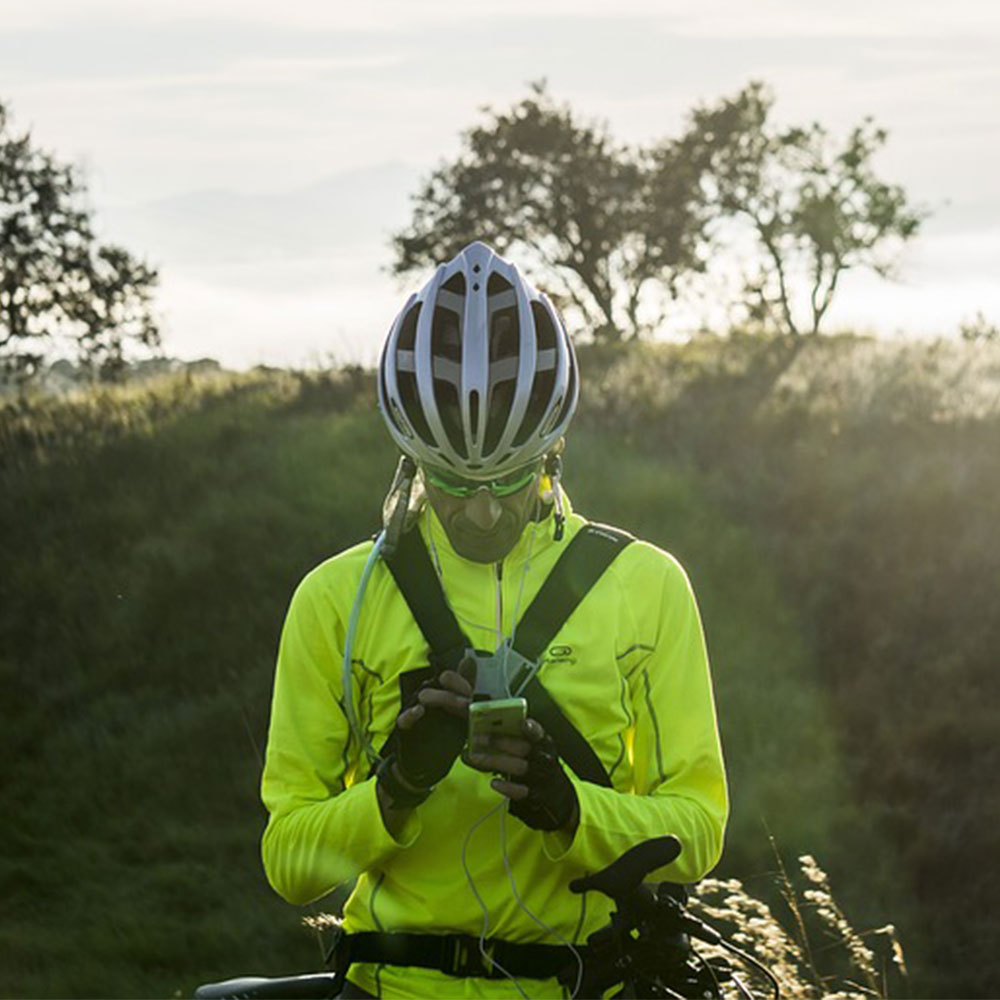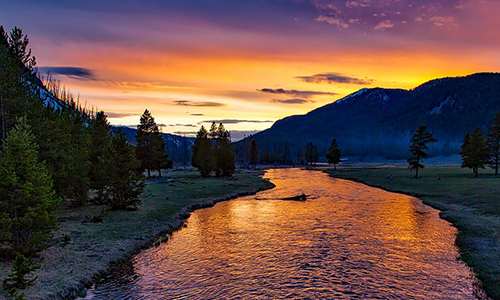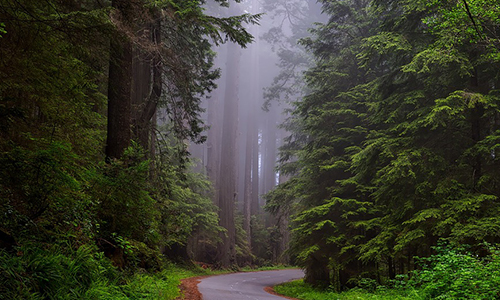How and Why I Became A Back Country Ranger
Author

Chris shares his passion for cycling, hiking, skiing, and climbing from Buxton, in the Peak District. As a blogger for Outdoor Look, Chris shares outdoor tips and indoor tricks to help you get the most out of your time spent outside. When he's not out adventuring he's making videos or trying to keep up with his 4-year-old son.
 I am amazed by the fact that we all have our versions of what wilderness is. In spite of being so intangible we had to create a set of rules to effectively govern these lands and define it in a specified manner.
I am amazed by the fact that we all have our versions of what wilderness is. In spite of being so intangible we had to create a set of rules to effectively govern these lands and define it in a specified manner.
Though we all have our different variations of what wilderness is – uninhabited valleys, waterfalls, granite cliffs and untamed wildlife — the Wilderness Act Of 1964 officially defines wilderness as areas in contrast with those where man and his own works dominate the landscape. These are hereby recognised as areas where earth and its community of life are untouched by man, where man himself is a visitor who does not remain.
Management of a wilderness area falls under a hierarchical structure. Various federal Agencies such as The U.S. Forest Service, the U.S. Fish and Wildlife Service, The National Park Service and The Bureau of Land Management are responsible for protecting and managing wilderness areas on different levels.
How this Inclination for an Outdoor job occurred?
I had a keen interest in studying the natural world in high school. Soon, I went on to pursue my degree in environmental studies at the University Of Washington Program on the Environment. I first discovered my interest in working outdoors during my summer break. During the break I completed my George Melendez Wright Climate Change Fellowship program in Sitika, Alaska. This is when I found that I had a passion for park service which motivated me to hone skill set.
Eventually I became an interpretive ranger in the North Cascades National Park. After few months of working I realized that my passion specifically lied in interacting with people who go into the back country as they have the same level of curiosity and respect for nature as I have.
Tasks I Currently Have at Hand as a Back Country Ranger
 Since my first season in 2015 in North Cascades and later in 2016 and 2017, I was able to acquire additional skills as a Leave No Trace Trainer, a Wilderness EMT and Technical Rope trainer. More so, I started ski patrolling at Mount Bachelor in the off-season, which also required me to maintain an Outdoor Emergency Care Certification.
Since my first season in 2015 in North Cascades and later in 2016 and 2017, I was able to acquire additional skills as a Leave No Trace Trainer, a Wilderness EMT and Technical Rope trainer. More so, I started ski patrolling at Mount Bachelor in the off-season, which also required me to maintain an Outdoor Emergency Care Certification.
My main job when I am in the office is trip planning, issuing permits, issuing Leave No Trace protocols to visitors who want to go on a backpack trip in the back country. Also, I have to make sure that all the visitors are well informed of the precursory measures that need to be in place before they go out to enjoy the park for which I have to ask various questions regarding their health, equipment and reasons for the visit.
When in the field, I have to patrol more than 750 miles of wild trails in Yosemite. In addition to this, I check permits, respond to emergencies, answer questions and maintain crucial trails so that the hikers get a complete experience of the serene wilderness without any hassles.
What’s in for the Future?
Though I deeply love what I do here at Yosemite Wilderness Park, I don’t see myself in the current designation. It’s an unfortunate fact that the more you climb the hierarchical ladder the less you spend time in the field.
I imagine myself delving deeper into rescuing and research work or maybe working as a paramedic in the near future. Whatever it may be, I cannot detach myself from the wildness and rawness of these lands as they give me a sense of security and oneness with everything that exists on this sphere.
Author

Chris shares his passion for cycling, hiking, skiing, and climbing from Buxton, in the Peak District. As a blogger for Outdoor Look, Chris shares outdoor tips and indoor tricks to help you get the most out of your time spent outside. When he's not out adventuring he's making videos or trying to keep up with his 4-year-old son.
- Speed Up Your Post-Hike Recovery with These 6 Essential Tips
- Cycling through Tranquil Roads and Coastal Views on the Isle of Wight
- The Essential Guide to Hiking Safety: 5 Tips Every Hiker Should Know
- Run Smart, Run Strong: Your Guide to Injury-Free Running
- Embrace Biking: Essential Tips for Beginners
Categories
- Sport (28)
- Product Reviews (3)
- Team Outdoor Look (7)
- Mike Wild (2)
- Mike Payton (2)
- Suse Hammond-Pears (3)
- Snowboarding (12)
- Latest Offers (105)
- Shop Talk (1)
- Competitions (7)
- Walking (413)
- Lifestyle Fashion (8)
- Travel (86)
- Kit Guides (176)
- Workwear Clothing (6)
- Safety Workwear (4)
- Health/Fitness (289)
- Skiing (91)
- Great Outdoors (1316)
- Cycling (92)
- January 2025
- December 2024
- November 2024
- October 2024
- September 2024
- August 2024
- July 2024
- June 2024
- May 2024
- April 2024
- March 2024
- February 2024
- January 2024
- December 2023
- November 2023
- October 2023
- September 2023
- August 2023
- July 2023
- June 2023
- May 2023
- April 2023
- March 2023
- February 2023
- January 2023
- December 2022
- November 2022
- October 2022
- September 2022
- August 2022
- July 2022
- June 2022
- May 2022
- April 2022
- March 2022
- February 2022
- January 2022
- December 2021
- November 2021
- October 2021
- September 2021
- August 2021
- July 2021
- June 2021
- May 2021
- April 2021
- March 2021
- February 2021
- January 2021
- December 2020
- November 2020
- October 2020
- September 2020
- August 2020
- July 2020
- June 2020
- May 2020
- April 2020
- March 2020
- February 2020
- January 2020
- December 2019
- November 2019
- October 2019
- September 2019
- August 2019
- July 2019
- June 2019
- May 2019
- April 2019
- March 2019
- February 2019
- January 2019
- December 2018
- November 2018
- October 2018
- September 2018
- August 2018
- July 2018
- June 2018
- May 2018
- April 2018
- March 2018
- February 2018
- January 2018
- December 2017
- November 2017
- October 2017
- September 2017
- August 2017
- July 2017
- June 2017
- May 2017
- April 2017
- March 2017
- February 2017
- January 2017
- December 2016
- November 2016
- October 2016
- September 2016
- August 2016
- July 2016
- June 2016
- May 2016
- April 2016
- March 2016
- February 2016
- January 2016
- December 2015
- November 2015
- October 2015
- September 2015
- August 2015
- July 2015
- June 2015
- May 2015
- April 2015
- March 2015
- February 2015
- January 2015
- December 2014
- November 2014
- October 2014
- September 2014
- August 2014
- July 2014
- June 2014
- May 2014
- April 2014
- March 2014
- February 2014
- January 2014
- December 2013
- November 2013
- October 2013
- September 2013
- August 2013
- July 2013
- June 2013
- May 2013
- April 2013
- March 2013
- February 2013
- January 2013
- December 2012
- November 2012
- October 2012
- September 2012
- August 2012
- July 2012
- June 2012
- May 2012
- April 2012
- March 2012
- February 2012
- January 2012
- December 2011
- November 2011
- October 2011
- September 2011
- August 2011
- May 2010
- April 2010
- March 2010
- February 2010
- January 2010
- November 2009
- October 2009
- September 2009
Submit a Comment